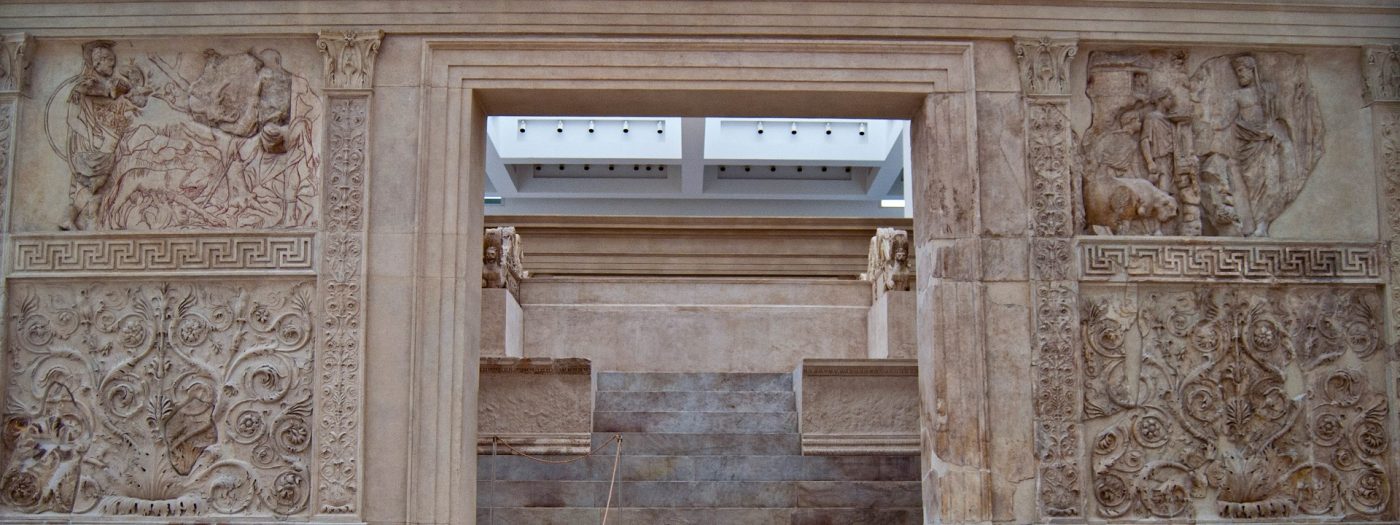Date opened: 9 BC
Location: Rome, Italy
Architectural style: Ancient Roman Architecture
Material: Marble
Ara Pacis, which is also known as Ara Pacis Augustae (Latin for „Altar of the Augustan Peace“) is a shrine consisting of a marble altar which is enclosed by walls. This was erected on January 30th, 9 BC in Rome’s Campus Martius (Field of Mars) in honour of the emperor Augustus. This can be referenced to Ovid’s Fasti and „Res Gestae Divi Augusti“ (Achievements of the Divine Augustus) by Augustus himself.
As Augustus came back from the provinces of Gaul after spending three years supervising the administration of the region, the structure was commissioned in 13 BC to honour his return. Augustus chose to put the altar near his mausoleum in the Campus Martius, even though the Senate proposed building it in the Curia. However, the building was eventually buried by the sedimentation from the rising Tiber River.
It is speculated that parts of the shrine may have been uncovered before 1536 during the construction of the palace which has been built on the site. This can be seen in an engraving by Agostino Veneziano that replicates a frieze that is known to have come from the shrine. Several of the marble components were discovered in the 1800s; however, it was not until 1937 when a full-scale operation was launched that the remaining portions of the building were unearthed. A monument was built beside the Tiber known as Museo dell’Ara Pacis in 1938, which housed the reconstituted edifice. This was replaced by a structure designed by Richard Meier, a famous American architect of the time, in 2006. All throughout the 20th-century restoration of the Ara Pacis continued, both to reverse the effects of earlier unsuccessful attempts at repair and to stop the decay of the material due to its age.
The altar comprised of an interior space surrounded by a stone precinct wall. The structure was raised on a marble base with steps leading into that space. Most of the elements of Ara Pacis were heavily ornamented with relief carvings. These sculptures represented the shrine’s dedication ceremonies, events from Roman legend and floral motifs.
These works are said to be amongst the most excellent and most beautiful examples of Roman art.



